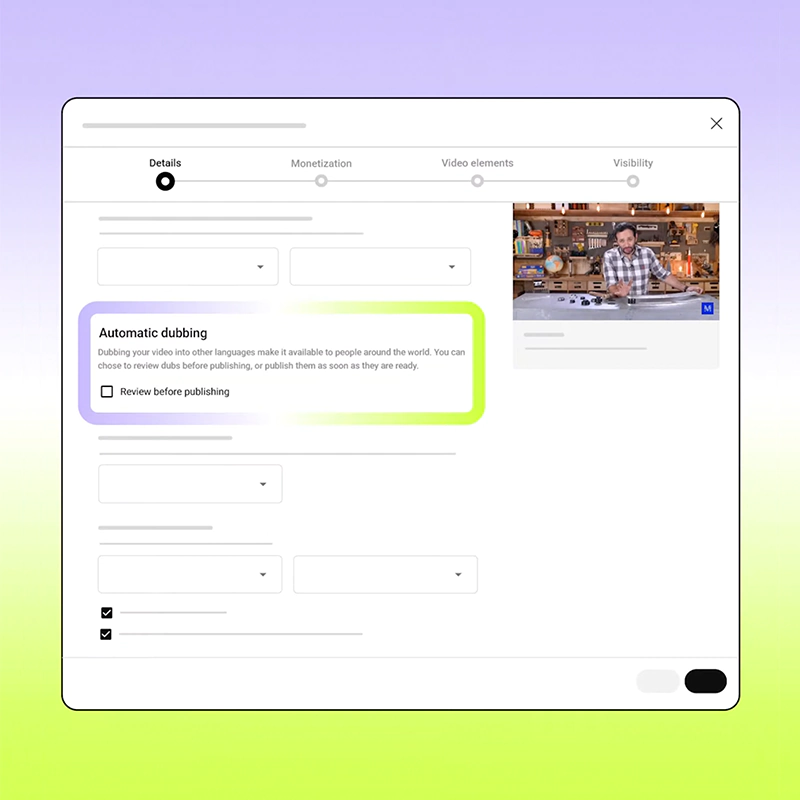
Unlike text on webpages that can be translated, videos pose a greater challenge due to spoken language differences.
While subtitles have long been a solution, they require manual creation or auto-generation, which isn't always accurate or convenient. This is where Google introduces YouTube to an AI-powered automatic dubbing tool. This, should be a game-changer for creators, and a whole new experience for viewers alike
This advanced feature uses artificial intelligence to translate and dub videos into multiple languages automatically, making content more accessible and breaking down language barriers like never before.
With this tool, creators can reach a global audience without needing expensive, time-consuming dubbing services.
Viewers, in turn, can enjoy videos in their native languages, enhancing their viewing experience.
By integrating this cutting-edge technology, YouTube is transforming how content is consumed worldwide, making the platform even more inclusive and user-friendly.
In a blog post:
As for how the feature works, all creators have to do, is upload a video.
"Just like you normally would! No need to do anything special," said YouTube.
Once the video is uploaded, YouTube will automatically detect the language of the video, to then automatically create dubbed versions of it in other languages.
Creators who wish to see (and hear) their dubbed videos, cam go to YouTube Studio in the 'Languages' section. From there, they can unpublish the dubbed version if they don't like it, or delete any of the dubs they wish.
Creators can find this on YouTube Studio's 'Advanced Settings.' section.

At this time, the technology is still new, and that it's far from perfect.
It's also limited to far less languages that the formidable, and the all-powerful Google Translate.
For example, the auto dubbing can only dub video that is English to French, German, Hindi, Indonesian, Italian, Japanese, Portuguese, and Spanish. And if the video is any of those other languages, it will be dubbed into English.
It's also sounds kind of robotic, if not artificial.
"We're working hard to make it as accurate as possible, but there might be times when the translation isn't quite right or the dubbed voice doesn’t accurately represent the original speaker. We really appreciate your patience and feedback as we continue to improve!" said YouTube.
